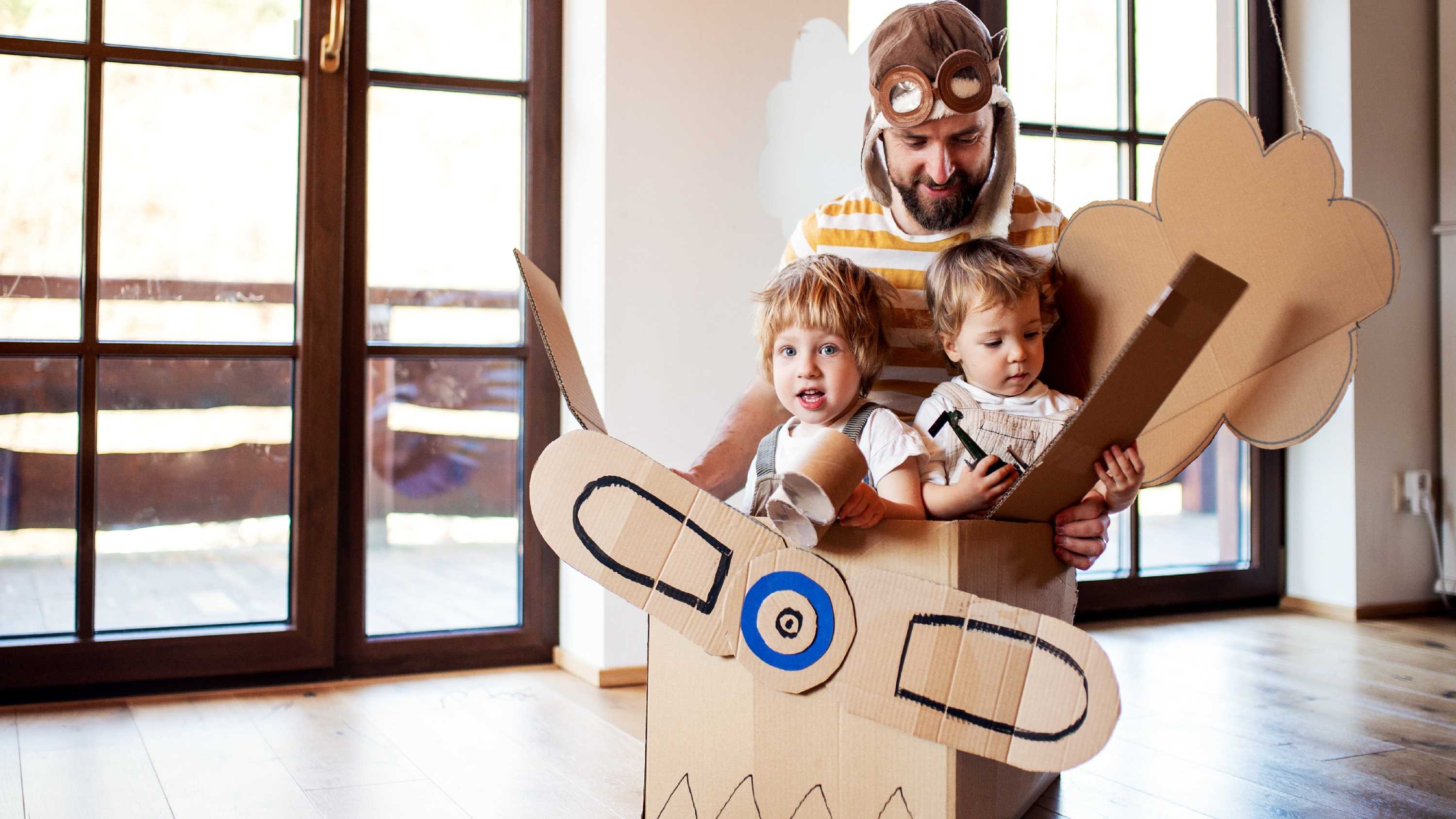Stories are great content - or at least the good ones are. Telling stories should be one of your principal tools to bring messages to life.
Not because we say so, but because this is how you infiltrate the brains of your target audience and install content that continues to deliver your message, long after the presentation or conversation has ended.
Think of the stories told to you, decades ago, perhaps by a parent, a teacher or coach, that have stayed with you. Think of all the information, the news, the movies, the learning that you’ve been exposed to, and yet, these stories remain inside you and their messages continues to have impact.
Stories encapsulate and deliver messages. They are like extended metaphors.
Aesop, the slave and storyteller who lived in ancient Greece, gave us fables - The Town Mouse and the Country Mouse, The Fox and the Crane and The Greedy Dog. Each story delivers a message in the form of a moral.
Chinese culture has a rich history of proverbs that have stories behind them; stories that deliver a message about how to live well. The Old Man of the Frontier. The Fox who took the Tiger’s power. Old horses know the way.
Jesus told parables. Abe Lincoln could spin a terrific yarn. Ellen Degeneres is a great storyteller.
Novels. Theatre. TV dramas and movies take the art to extraordinary heights. There is no reason you should not access the power of telling stories in your context.
Good stories are great content for all the reasons that metaphors and images are; they are memorable, they can be visual, emotional and most of all, they help people to understand cause and effect.
The simplest story-telling structure shows how situation, character and action lead to a result.
As people seem to be fond of acronyms to remember structures, and I want you to remember this one, here’s the acronym. It’s a STAR.
Situation.
Thinking.
Action.
Result.
This is the situation. This is what the characters thought, or felt about the situation. This is the action they took and this was the result.
The fact that the STAR structure is used in interview technique tells you that these are the things that people want to know about. Not just the elements of the story, but how do they relate to one another. How does one element lead to the next and what can we learn from it? What does it tell us about the nature of reality? The laws of cause and effect?
The greedy dog, who was carrying a bone in his mouth happened to see his reflection at the edge of the lake. (Situation)
He thought that, if he took the bone from that dog in the lake, he would have two bones. (Thoughts/feelings)
He snarled at his reflection and lunged for the reflection of his bone (Action) and in doing so, dropped his real bone into the lake, losing it forever (Result).
What do we learn? The message is that by chasing illusory rewards you risk losing what you already possess.
A stories of personal experience, it could be yours or it could be someone you know, are called anecdotes. Good anecdotes work because they are relatable. The audience has a relationship with a character in the story - either you or through you.
The trouble with anecdotes is that they can wander, or they might seem to be an unnecessary indulgence. What keeps them on track is the STAR structure.
My tertiary education was in the performing arts. I trained as an actor and found myself writing, directing and producing theatre. When my wife Annie - also an actor, writer and director - when Annie and I were expecting our second child, I was deeply concerned that our relationship, or the baby’s future, could be undermined by the fickle nature of the acting profession.
I took a job in sales for a media production company that involved solving organisational problems with corporate videos and websites. This brought me into intimate contact with organisations with significant technical and commercial competence, but very little insight into the practicalities of interpersonal communication and collaboration.
So that’s one cycle through the STAR structure. That result - intimate contact with corporates - now forms the Situation for the next cycle.
Many of the organisations I was working with were impaired by unhelpful drama, due to a lack of competence in areas in which Annie and I were expert.
I thought, Annie and I, could make a serious contribution here.
I quit my job, and we started the business. We taught communication and collaboration skills. We performed theatre at conferences, which lead to us producing our own media, and then to put all these modalities to work to achieve significant organisational development impact, we included consulting in the mix.
The result is that after twenty years of experience in the field, we have created a unique organisational development consultancy and a new professional role - the corporate dramatist. We have worked with the majority of blue chip companies operating in Australia and many abroad. We are still married and that second child - our daughter - is currently doing honors in Chemistry as part of a science law degree.
OK. The elements at work in that story. Being personal it’s relatable. We may share the same concerns about needing to provide for a family, or making a contribution.
But there was also something different. Applying the disciplines of drama to organisational performance.
There was risk. There was action. And you might notice that in the result part, I answered the question poised in the first Situation part, about my concerns for my relationship and the future of our daughter.
So that’s an approach to purposeful storytelling. The best way to build competence is to try it.
You know how the STAR structure works. Over to you.
Watch David’s Brain-Friendly Channel Session
When: Mar 31 2022 7PM GMT+11
Hosted: Silvia Damiano, Founder, About my Brain Institute
Guest: David McCubbin, Founder & CEO ‘coup’
👇 Subscribe to our YouTube Channel!
- i4 Neuroleader (353)
- Leadership & Culture (336)
- Brain Health & Wellbeing (206)
- Innovation (97)
- Performance (85)
- Our News (79)
- Collaboration (68)
- Agility (53)
- Practitioner Stories (44)
- In The Press (36)
- Make Me A Leader (33)
- Balance (31)
- Integration (30)
- Imagination (29)
- Awareness (23)
- Brain-Friendly Channel (22)
- Brain-Friendly Leadership (22)
- Communication (22)
- Curiosity (21)
- Inspiration (19)
- Intuition (19)
- Attitude (17)
- Courage (16)
- Adaptability (14)
- Case Studies (14)
- Drive (14)
- Generosity (13)
- Ethics (9)
- Mental Readiness (9)
- Influence (8)
- Retreat (8)
- Brain-Friendly Leadership (1)
- Oracle Cards (1)
- 1 November 2025 (2)
- 1 September 2025 (3)
- 1 August 2025 (5)
- 1 July 2025 (5)
- 1 June 2025 (2)
- 1 April 2025 (1)
- 1 March 2025 (8)
- 1 February 2025 (3)
- 1 September 2024 (4)
- 1 July 2024 (2)
- 1 June 2024 (6)
- 1 May 2024 (2)
- 1 April 2024 (3)
- 1 March 2024 (1)
- 1 November 2023 (1)
- 1 August 2023 (1)
- 1 July 2023 (2)
- 1 June 2023 (2)
- 1 May 2023 (4)
- 1 April 2023 (2)
- 1 March 2023 (7)
- 1 February 2023 (4)
- 1 January 2023 (1)
- 1 September 2022 (1)
- 1 May 2022 (3)
- 1 April 2022 (1)
- 1 March 2022 (5)
- 1 February 2022 (4)
- 1 January 2022 (4)
- 1 December 2021 (2)
- 1 November 2021 (4)
- 1 October 2021 (3)
- 1 September 2021 (6)
- 1 August 2021 (1)
- 1 April 2021 (1)
- 1 December 2020 (2)
- 1 November 2020 (1)
- 1 September 2020 (1)
- 1 August 2020 (1)
- 1 July 2020 (3)
- 1 June 2020 (4)
- 1 May 2020 (3)
- 1 April 2020 (4)
- 1 March 2020 (6)
- 1 February 2020 (4)
- 1 January 2020 (2)
- 1 December 2019 (3)
- 1 November 2019 (3)
- 1 October 2019 (5)
- 1 September 2019 (4)
- 1 August 2019 (4)
- 1 July 2019 (4)
- 1 June 2019 (5)
- 1 May 2019 (9)
- 1 April 2019 (9)
- 1 March 2019 (8)
- 1 February 2019 (7)
- 1 January 2019 (8)
- 1 December 2018 (5)
- 1 November 2018 (10)
- 1 October 2018 (16)
- 1 September 2018 (9)
- 1 August 2018 (10)
- 1 July 2018 (9)
- 1 June 2018 (8)
- 1 May 2018 (9)
- 1 April 2018 (9)
- 1 March 2018 (9)
- 1 February 2018 (8)
- 1 January 2018 (8)
- 1 December 2017 (6)
- 1 November 2017 (9)
- 1 October 2017 (9)
- 1 September 2017 (8)
- 1 August 2017 (10)
- 1 July 2017 (8)
- 1 June 2017 (8)
- 1 May 2017 (9)
- 1 April 2017 (8)
- 1 March 2017 (6)
- 1 January 2017 (3)
- 1 December 2016 (4)
- 1 November 2016 (5)
- 1 October 2016 (4)
- 1 September 2016 (2)
- 1 August 2016 (4)
- 1 July 2016 (4)
- 1 June 2016 (2)
- 1 May 2016 (3)
- 1 April 2016 (3)
- 1 March 2016 (7)
- 1 February 2016 (2)
- 1 January 2016 (5)
- 1 December 2015 (2)
- 1 November 2015 (2)
- 1 October 2015 (4)
- 1 September 2015 (2)
- 1 August 2015 (2)
- 1 July 2015 (1)
- 1 June 2015 (3)
- 1 May 2015 (4)
- 1 April 2015 (5)
- 1 March 2015 (3)
- 1 February 2015 (3)
- 1 January 2015 (3)
- 1 December 2014 (3)
- 1 November 2014 (3)
- 1 October 2014 (3)
- 1 September 2014 (5)
- 1 August 2014 (4)
- 1 July 2014 (5)
- 1 June 2014 (3)
- 1 May 2014 (1)
- 1 March 2014 (1)
- 1 December 2013 (2)
- 1 November 2013 (1)
- 1 July 2013 (1)
- 1 June 2013 (1)
- 1 May 2013 (3)
- 1 April 2013 (1)
- 1 March 2013 (2)
- 1 February 2013 (1)
- 1 January 2013 (2)
- 1 November 2012 (1)
- 1 October 2012 (1)
- 1 September 2012 (1)
- 1 August 2012 (2)
- 1 July 2012 (1)
- 1 June 2012 (1)
- 1 May 2012 (2)
- 1 April 2012 (1)
- 1 February 2012 (1)
- 1 January 2012 (1)
- 1 November 2011 (1)
- 1 October 2011 (3)
- 1 September 2011 (2)
- 1 July 2011 (1)
- 1 June 2011 (1)
- 1 May 2011 (1)
- 1 April 2011 (1)
- 1 March 2011 (1)
- 1 February 2011 (2)
- 1 January 2011 (4)
- 1 December 2010 (4)
- 1 November 2010 (3)
- 1 October 2010 (5)
- 1 September 2010 (4)
- 1 August 2010 (4)
- 1 July 2010 (3)
- 1 June 2010 (4)
- 1 May 2010 (7)
- 1 April 2010 (5)
Subscribe by email
You May Also Like
These Related Stories

The Art And Science Of Expressing And Recognising Emotions

The Body As The Mind’s Best Ally



No Comments Yet
Let us know what you think